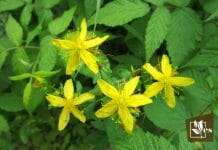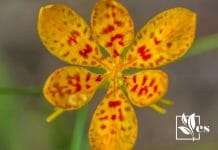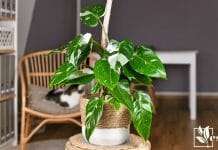Philodendron swiss cheese vs Monstera adansonii is often a point of contention between fans of both species of the Araceae family. We are here to give you an in-depth comparison of both of these plants.
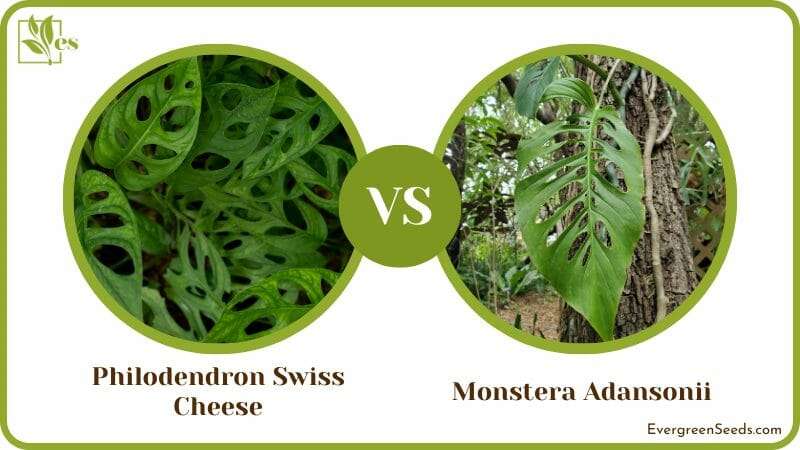
We will also shed light on what makes each of these plants unique from each other, so without further ado, let’s dive into this complete and comprehensive guide right away! We also created a more general comparison guide about Philodendron and Monstera plants.
JUMP TO TOPIC
Comparison Table
Before we get into the nitty gritty, here is a quick table of comparison between these two plants.
| Philodendron Swiss Cheese | Monstera Adansonii | |
| Growth Habit | Vine | Creeping |
| Average Size |
|
|
| Humidity Percentage | 65 to 80 percent | 50 to 60 percent |
| Ideal Temperatures |
|
|
| Potting Medium |
|
|
| Soil pH | Grows only in acidic soil | Grows in neutral to mildly acidic soil |
| Bloom | Does not produce flowers |
|
| US hardiness Zone | 9 to 11 | 10 to 12 |
| Toxicity |
|
|
What Are the Differences Between Philodendron Swiss Cheese vs Monstera Adansonii?
The main difference between Philodendron swiss cheese vs Monstera adansonii is that they belong to different plant genera. Philodendron is comparatively larger in size and does not produce any flowers, unlike adansonii. There are also marked differences between Philodendron vs monstera care.
What Is Philodendron Swiss Cheese Best For?
This plant is best for keeping as an indoor ornamental piece. It has very simple plant care demands, its leaf shape and color make it lovely to look at and you can even grow it in water.
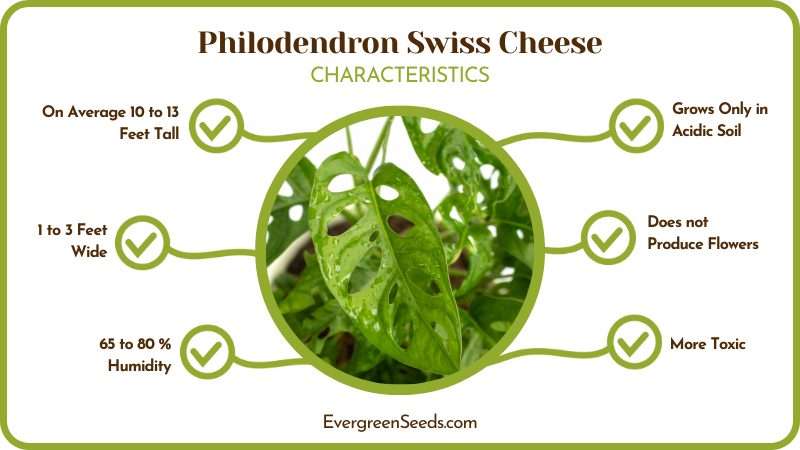
Not only this, but they are also best for propagation and improving your house’s air moisture levels. Read more about this plant’s best qualities below.
– For Improving the Quality of Air in Your Home
The swiss cheese vine plants act as a natural air purifier when grown indoors. All plants have a natural tendency to carry out gaseous exchange by sucking carbon dioxide from the air and secreting oxygen back into it.
Because Philodendrons have large-sized leaves, they have a larger surface area compared to most other houseplants. This naturally means that they are far more effective at gaseous exchange too.
Not only this, but these plants can also remove other potentially harmful toxins from the air as well. Formaldehyde, xylene, and toluene are just chemical compounds that are filtered out of your air by these wonderful plants.
– For Keeping as Indoor Plants
Philodendron Swiss cheese plants are definitely the best for growing indoors. They are extremely low-maintenance and only demand a very basic level of care all year round. If you are someone with little time for fussy plants, then this is the ideal plant for you.
Read the section below to learn how to take care of Philodendron as a houseplant.
– Water Needs
Use your finger to see how much the soil has dried. If it is more than one inch, then it’s time to water this plant right away.
– Light Needs
Philodendrons grow successfully under partial or filtered light. In fact, keep them away from direct light all the time.
– Temperature and Humidity
This plant likes to be kept in a warm room. Temperatures as high as 80 degrees Fahrenheit are preferred. Humidity is best kept at or near 50 percent.
– Soil and Fertilizer
The number one requirement for this plant is that its soil needs to be peat-based. This makes it pretty rich organically. The addition of perlite and some bark chunks will open it up and improve water flow.
Fertilize monthly with a balanced but diluted liquid fertilizer. Fertilizing too much is not recommended because it leads to yellow leaves.
– For Growing In Water
The Philodendron swiss cheese plant is one of the few rare ones that are best for growing in water. Yes, not only can you propagate it successfully in water, but continue to keep growing it there as well. Their trailing vines and roots look stunning floating around in a transparent jar of water.
We would admit, though, that growing Philodendron in water makes it a bit high-maintenance. You will have to choose a transparent glass jar that is strong as well as large enough to accommodate it. The water in the jar also needs to be changed once a week or once every two weeks.
Keep this jar in a brightly-lit space so that the plant can carry out its food-making process. You must also keep adding seaweed or some other commercial fertilizer as a continuous source of nutrition for the water-bound roots.
– For Having Aerial Roots
These are the roots that grow from the stem above the surface of the soil. Philodendrons are known for producing these long and elegant extra terranean roots. Such roots help the plant in absorbing moisture from the air. In nature, they attach to the stem of nearby trees and serve to provide support and nutrients to the climbing vine.
– For Reducing Dryness Inside Your House
Dry air inside the house is a real nuisance. In fact, it can be quite harmful to your overall health, especially if you have any respiratory or skin issues. Luckily, philodendrons have a very high rate of transpiration.
When watered properly, they tend to add to the surrounding humidity a great deal. Their air-borne roots also contribute to this phenomenon. Just make sure not to skip watering this plant along with misting it lightly every week.
– For Propagating at Home
Philodendrons are best for propagating all by yourself at home. This saves you from buying a new plant and you can gift your friends a new plant each. Below is a brief step-by-step guide on how to propagate this plant.
- First of all, you need to take a stem cutting that is 3 to 5 inches long. This cutting must have one to two leaf nodes with leaves attached to it.
- Allow it to dry somewhere safe for several days, then put some rooting hormone on the end that was cut.
- Now mix the best soil for philodendron that you can. Initially, use a pot that is small and only shift to a larger one once the plant has grown sufficiently.
- Place your cutting in the soil and relocate the pot to a moderately bright and warm place.
- Alternatively, you can also support your cutting in a water-filled jar using a moss pole. Keep changing the water every other week until roots emerge and become substantially long. Then you can either transfer them to a pot or continue keeping them in a larger, water-filled pot.
– For Making a Bold Statement
Philodendrons are large plants with an impressive growth rate. They can grow up to 20 feet tall and approximately 6 feet across. Keeping them indoors is best if you want to make a bold statement. Whether it is the corner of the room or the center of it, these plants are sure to catch everyone’s attention from the get-go.
– For Having Several Eye-Catching Varieties
Split-leaf philodendrons are best when it comes to providing you with a wide variety of indoor plants to choose from. All plants within this genus sport the classic fenestration on their wide leaves. Each species has its own unique identifying features as well, so you can choose the plant of your liking.
What Is Monstera Adansonii Best For?
The Monstera adansonii plant is best for keeping as a houseplant due to its simple care guide. It is also good for keeping in the form of decorative plants and for bringing mental peace.
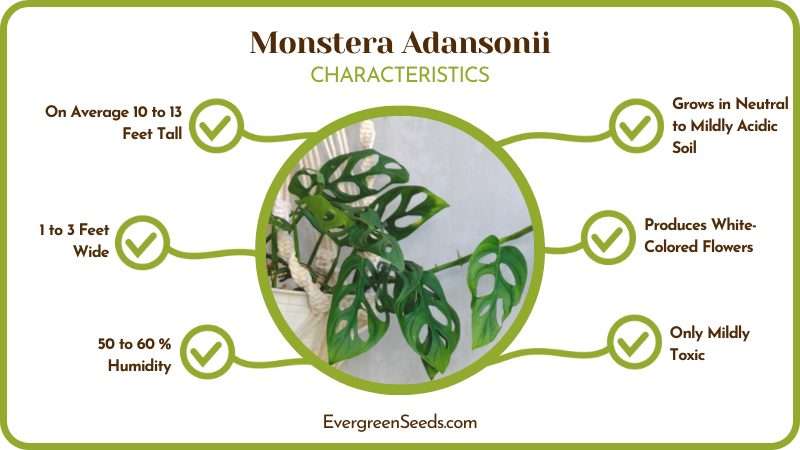
Read about all these points along with some care tips here.
– For Taking Care Of
Monstera adansonii care is probably the best thing about this plant. You will have the easiest time catering to the needs of this plant.
– Light Needs
The most appropriate light for this plant is a bright, indirect one, although this plant will tolerate two to three hours of the direct early morning sun. Exposure to light of longer duration or intensity will cause Monstera adansonii leaves to get sunburnt.
– Water Needs
Monstera adansonii plants need watering whenever the top one inch of the soil parches up. It is best to use distilled or reverse-osmosis filtered water.
– Temperature and Humidity
Maintain a room temperature between 65 to 80 degrees Fahrenheit. Also, maintain humidity within 65 to 80 percent all the time. Otherwise, you will find your leaves turning yellow or brown.
– Soil and Fertilizer
The soil for Monstera adansonii needs to be loamy and able to drain very fast. It must also be rich in organic nutrients in the form of peat or moss. Even so, the soil must be changed every two years at the most.
Fertilize every month during the growing months with a well-balanced liquid fertilizer. For the rest of the year, make it to once every two years.
– For Keeping as Decorative Plants
The Monstera adansonii plant is insanely popular as a decorative indoor species. Several factors contribute to this popularity. Most plant owners love their broad, heart-shaped leaves with fenestrations in them, while others prefer their creeping growth habit.
These are the smallest in size among all other monstera varieties. Their moderate size also makes them the ideal choice to be kept on shelves and windowsills as ornamental pieces. Trust us, keeping Monsteras for decorative purposes is never going to get out of vogue.
– For Propagating by Yourself
This monstera plant is best when it comes to home propagation. Even a beginner can propagate Monstera Adansonii by themselves and get quite successful results.
You can read the steps of propagation here.
- Start by cleaning and disinfecting sharp pruning scissors by rubbing alcohol on them. Use these scissors to slash off a stem cutting containing two to three leaves in it.
- This cutting should be within a range of 4 to 6 inches in length. Wrap it in a paper napkin to dry for a day or two. This would result in callus formation at the snipped end.
- Dip the callused end of the cutting in rooting hormone as this encourages new growth.
- Mix a new soil and fill a well-draining terracotta pot with it, then place your cutting in the soil from the callused end.
- Keep the mix slightly moist initially. Provide your cutting with optimal conditions as the new plant grows within a time period of four to five weeks.
– For Peace and Mental Health
There are several studies that prove that growing plants at home is a real boost for your mental health and well-being. Looking after and caring for plants suppresses the autonomous sympathetic nervous system, which calms the mind.
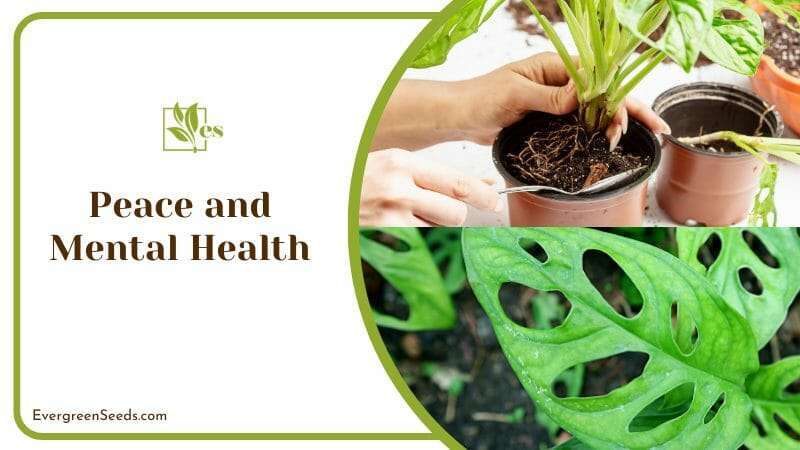
It also activates the reward centers of the brain and helps release useful brain chemicals like dopamine and serotonin. Even only having a plant within your living space has been known to increase positive mental energy by a great deal. What better plant to spread joy and positivity around than the ever-beautiful Monstera adansonii?


